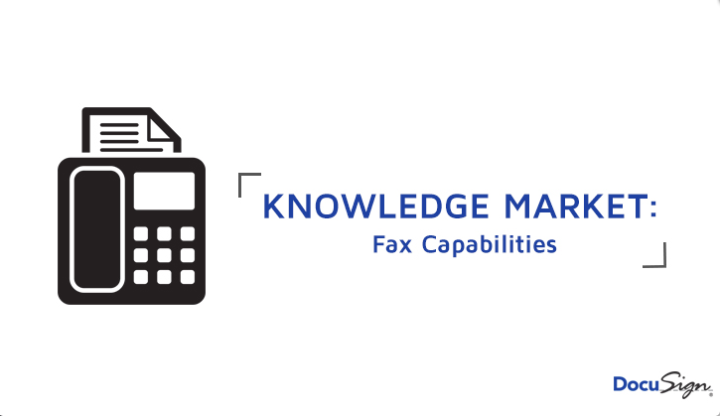You are viewing our site as a Broker, Switch Your View:
Agent | Broker Reset Filters to Default Back to ListThe Death of Fax Has a Long Tail
August 14 2016

Once considered the most ubiquitous piece of office equipment next to the copier, the fax machine has been relegated to the technology junk pile in dark office closets behind the bathroom tissue and holiday decorations. Yet in 2011 and 2012, over 700,000 fax machines (single function) were sold worldwide and Japan continues to be a heavy fax consumer, purchasing almost 1.2 million basic fax machines in 2014. How can such an obsolete technology continue to exist in pockets, keeping eFax vendors in business as well as remaining a part of the technology suite in multi-functional devices such as "All-in-One" printers?
To start, the fax machine will celebrate its 50th birthday in 2016. When it was introduced, the effects of Moore's Law was not at the pace of change as it is today. Therefore, there's a segment of people who are comfortable with fax and have no desire to change their ways.
The evolution of fax has also helped keep fax around longer. Baud rates over twisted pair gave way to internet speeds and digital lines. The advent of services like eFax only served to extend fax life. Faxes could be delivered in PDF format, reduce the amount of paper used, and contribute to electronic filing. However, it still couldn't eliminate the paper waste of the old sign on paper.
Nonetheless, fax remains on its technology deathbed waiting for terminal status. Pundits of fax machines may forget that faxing was not always the easiest. With technological advances present today, long held beliefs about faxing are poised to shatter.
Belief 1: Faxing is reliable
How many can remember having to redial several times due to busy signals or keying in the wrong number? Redials account for lost productivity. Even with the development of the auto-redial feature, productivity was lost answering calls looking for confirmation the fax was sent, triaging where the transmission problem occurred, and then standing by the fax to be assured the fax was sent. All of this can happen again if the recipient doesn't receive all the pages due to transmission interruptions.
Belief 2: Faxing is secure
This couldn't be farther from the truth. First of all, someone with enough technical knowledge could eavesdrop on the line.
Second, most people who've experienced sending or receiving faxes will note the fax machine was never really in a secure area. Anyone with access to the fax machine could sift through incoming faxes.
Third, unless both sending and receiving parties are using secured services, the security of fax is no better than talking over the phone.
Fourth, many fax machines often store the data on the machine, which can easily be accessed; or worse, the fax machine spits out a reproduction of all the messages on paper.
Finally, many hold the belief that faxes are just copies of originals and thus valid. However, when it comes to approvals and signatures, there is no guarantee that the fax is authentically signed.
As we move to an ever growing mobile society and as transactions are conducted at a faster and blindingly speedy pace, the days of faxing are numbered; we just don't know exactly for how long. Therefore, DocuSign offers to its customers the ability to both send and receive faxes. Why would DocuSign have this feature available for such an archaic technology?
Your company may be ready to go digital, but your customers might not be ready. DocuSign fax capabilities gives you digital continuity by allowing recipients to download documents, sign, and fax them back. The returned documents are then added to your envelope and remain within the DocuSign environment. Additionally, if recipients within the workflow require a fax instead of a digital copy, DocuSign allows you to specify a fax number for your recipient.
A significant benefit of DocuSign fax capabilities over standard faxing provides your company with higher levels of security. For example, the envelope is addressed to a specific recipient who, at minimum, must have security control over their email. Additional authentication methods can be added if desired. Also, once the documents are returned by fax, they remain secured on the DocuSign platform and require the appropriate authentication to access.
To find out more on how to implement and use the DocuSign faxing capabilities, please check out our white paper on the Knowledge Market.
To view the original article, visit the DocuSign blog.









